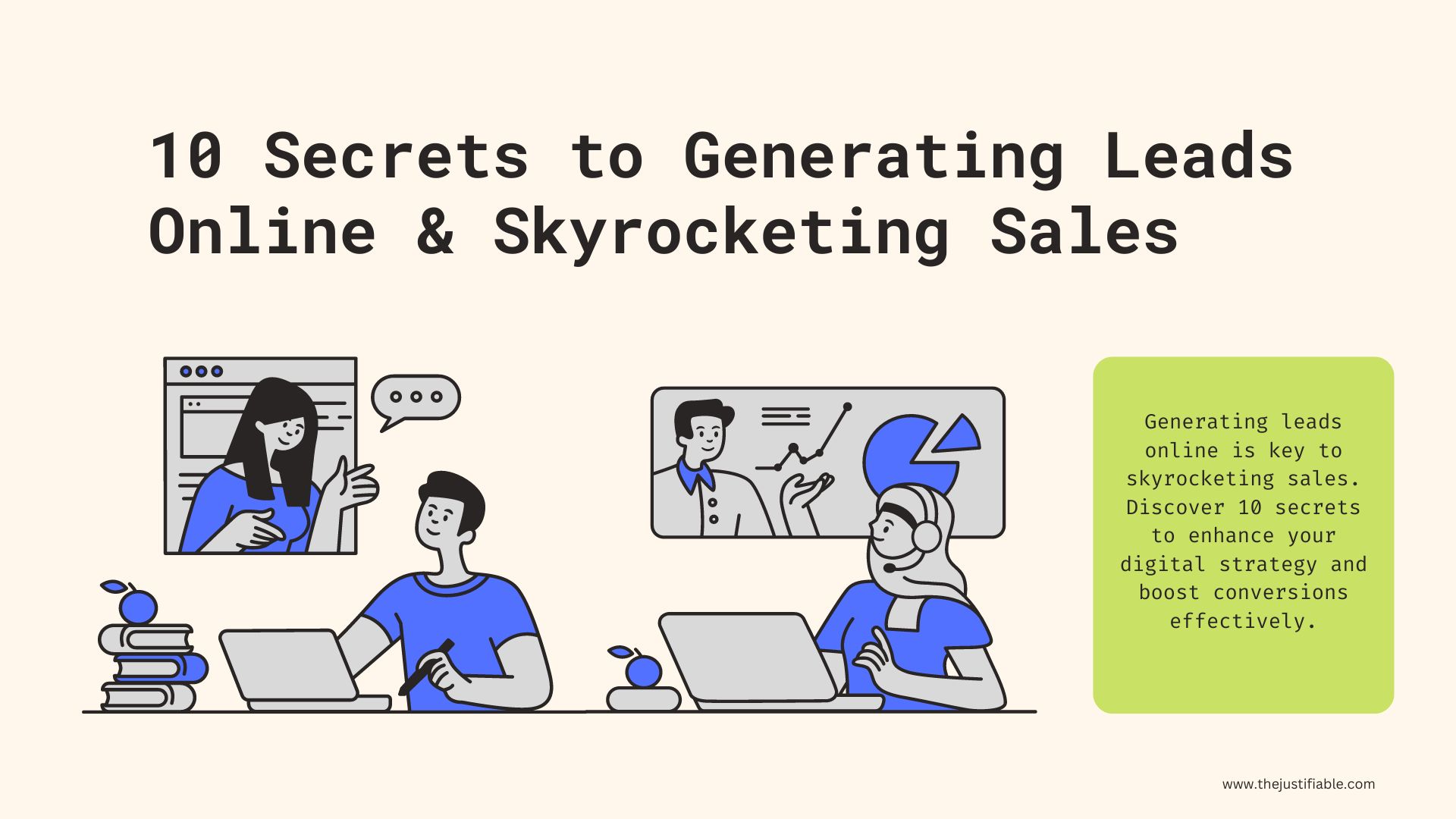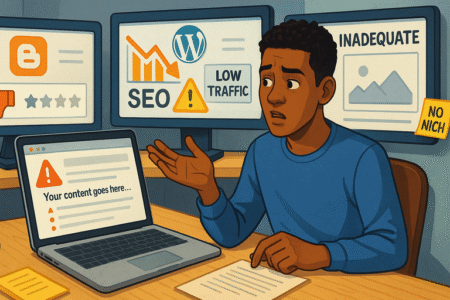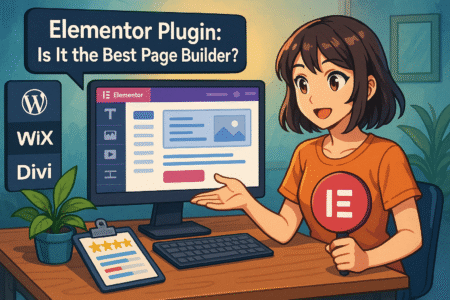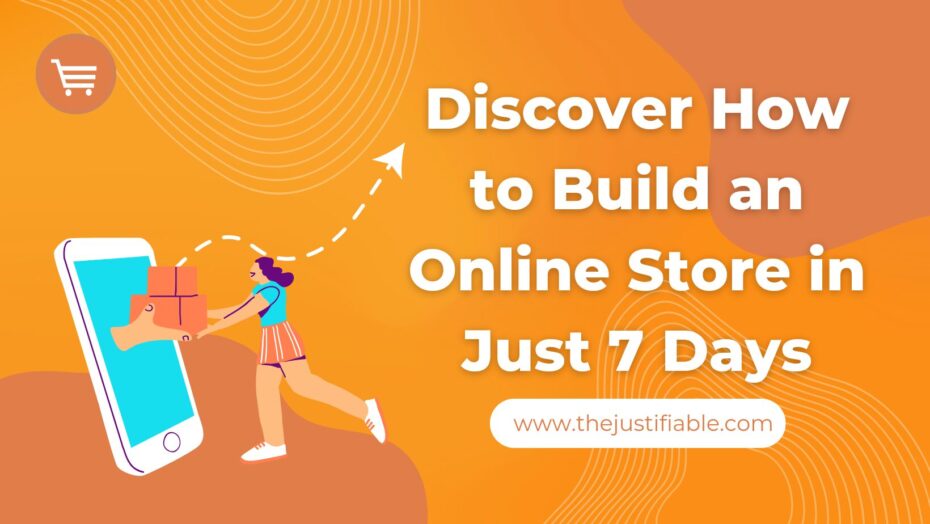Table of Contents
In the digital age, mastering the art of generating leads online is akin to discovering a hidden treasure map. It’s the first step towards skyrocketing sales and building a business that thrives on its online presence.
From my perspective, the journey to effective lead generation is both an art and a science, requiring a blend of creativity, strategy, and analytics.
This guide is crafted to illuminate the path for you, providing insights and strategies that are not only tested but also tailored to the evolving digital landscape.
Let’s embark on this journey together, exploring the tenets that will not only enhance your lead generation efforts but also elevate your sales to new heights.
1. Harness the Potential of SEO for Lead Generation
How can SEO amplify your lead generation efforts? Why is optimizing your website crucial for attracting more leads? Search Engine Optimization (SEO) is not just about improving search engine rankings; it’s a cornerstone for generating leads online effectively.
In my view, utilizing SEO to its fullest potential means aligning your online content with the queries and needs of your target audience. This process enhances visibility, drives quality traffic to your website, and, most importantly, increases the chances of converting visitors into leads.
By focusing on SEO, you’re not just chasing rankings; you’re building a foundation for sustainable online growth and lead generation.
I recommend seeing SEO as an ongoing conversation between your business and potential customers. Every tweak you make based on SEO principles improves your ability to be found by those looking for solutions you offer.
It’s crucial to understand that SEO is not a one-time task but a continuous strategy that involves regular updates and adjustments according to changing algorithms and consumer behaviors. In my experience, businesses that commit to an adaptive SEO strategy often see a significant improvement in their lead generation efforts over time.
SEO Services Recommendations
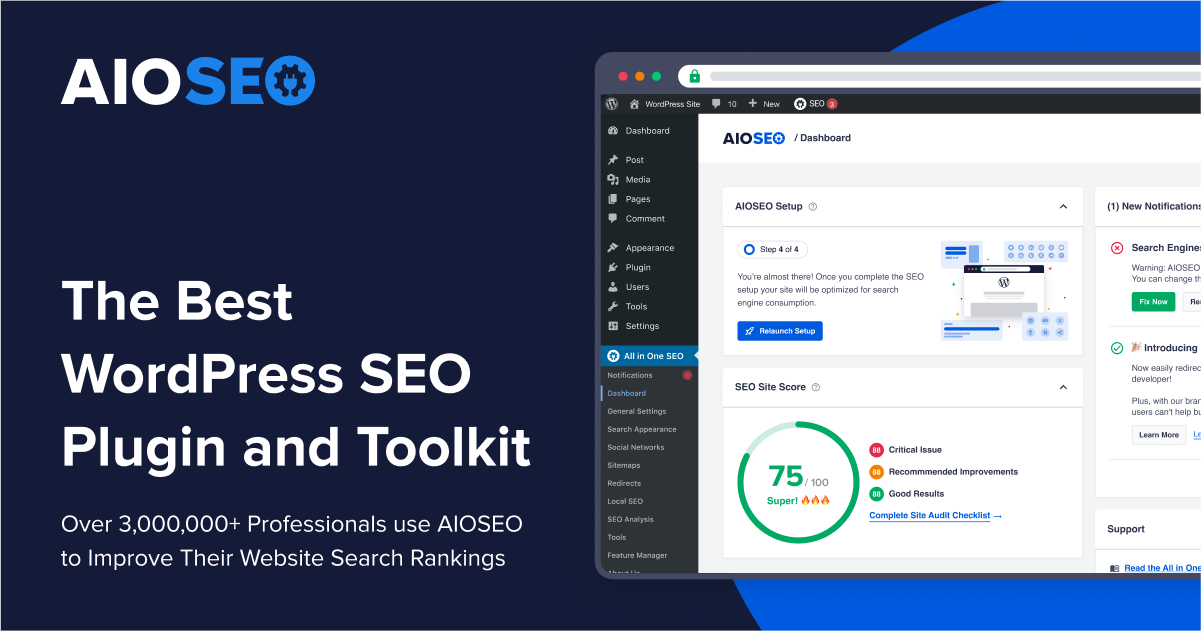 AIOSEO
| 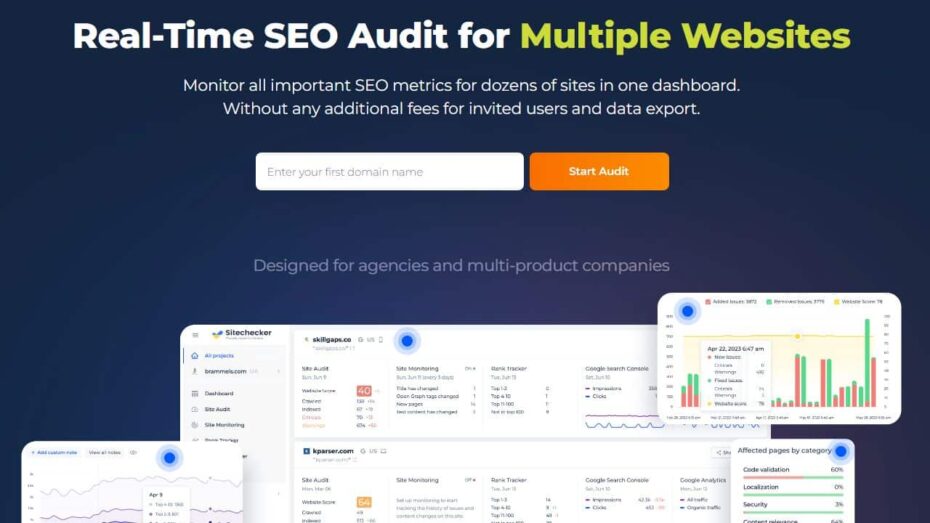 Sitechecker
| 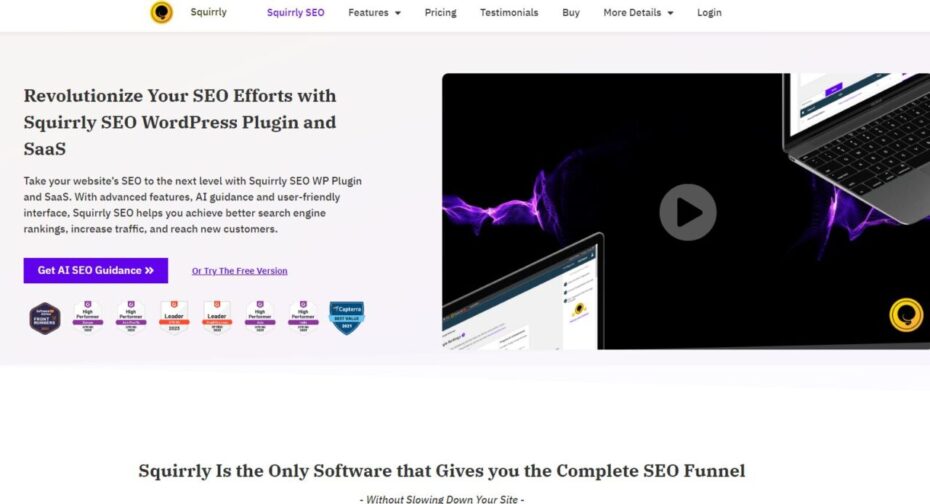 Squirrly
|
5 Essential SEO Strategies to Drive More Traffic
What are the key SEO strategies that can significantly increase traffic to your website? To drive more traffic, I suggest focusing on user experience, content relevance, mobile optimization, site speed, and authoritative backlinks.
Firstly, enhancing the user experience on your website can dramatically affect your SEO rankings. Search engines favor sites that provide a smooth, intuitive user journey, as this directly correlates with user satisfaction.
Secondly, creating content that is both informative and relevant to your target audience can establish your site as a valuable resource, encouraging more visits. I strongly believe that content is king in the SEO world, and tailoring it to answer specific queries is essential.
Mobile optimization is no longer optional, given the majority of searches are now performed on mobile devices. Ensuring your site is mobile-friendly can greatly affect your visibility and traffic. Additionally, site speed plays a crucial role in retaining visitors; a slow-loading site can lead to increased bounce rates.
Lastly, securing authoritative backlinks signals to search engines that your site is a credible source of information, thereby improving your rankings. In my opinion, focusing on these strategies can create a synergistic effect, boosting your site’s traffic and, by extension, lead generation.
The Role of Keywords in Capturing Qualified Leads
How can strategically chosen keywords make a difference in attracting more qualified leads to your site? Selecting the right keywords is foundational in bridging the gap between your content and the audience seeking your solutions.
I believe that understanding the intent behind search queries allows you to tailor your content more effectively, matching your offerings with the needs of potential leads. Keywords are not just about getting visitors to your site; they’re about attracting the right kind of visitors.
In my estimation, long-tail keywords play a crucial role in this process. These are more specific phrases that searchers are likely to use when they’re closer to a point of purchase or when they’re using voice search.
Integrating long-tail keywords into your content can lead to higher conversion rates, as these users are often searching with a clear intent to buy or engage.
Moreover, analyzing competitor keyword strategies can provide insights into what works in your industry. However, my recommendation is to also focus on unique keywords that might be overlooked by competitors but are still relevant to your audience. This can provide a competitive edge in attracting qualified leads.
From my perspective, keyword optimization is about understanding and matching the user’s search intent. It involves thorough research and continuous refinement of your keyword strategy to keep up with changing trends and behaviors.
I’m of the mind that with a strong keyword foundation, you can significantly enhance your ability to generate leads online through targeted content that resonates with and attracts your ideal customers.
2. Leverage Social Media’s Influence to Boost Your Leads

How can social media platforms become powerful tools in your lead generation strategy? What does it take to effectively harness their potential? Social media has transformed the landscape of digital marketing, offering unparalleled opportunities for generating leads online.
In my view, the key to leveraging social media lies in understanding the unique dynamics of each platform and engaging with your audience in a meaningful way.This involves not just broadcasting your messages, but also listening to and interacting with potential leads.
Most importantly, a tailored approach that resonates with the specific user base of each platform can significantly amplify your lead generation efforts.
I recommend using social media to showcase your brand’s personality and values, creating content that sparks conversations and encourages sharing. This not only increases your visibility but also fosters trust with your audience.
From my experience, businesses that prioritize authentic engagement on social media are more likely to convert followers into leads. It’s about creating a community around your brand, one post at a time, making social media a vital component of your overall lead generation strategy.
Maximizing Engagement: Tips for Facebook, Twitter, and LinkedIn
How can you increase engagement on major social media platforms to boost lead generation? To maximize engagement on Facebook, I suggest creating diverse content formats such as live videos, polls, and interactive posts.
This variety keeps your audience engaged and encourages more interaction, which can lead to increased visibility in users’ feeds. Speaking personally, incorporating user-generated content can also enhance credibility and foster a stronger community feeling.
On Twitter, the focus should be on timeliness and relevance. Engaging with trending topics and using relevant hashtags can greatly increase your reach.
I believe that prompt responses to comments and mentions also play a critical role in building relationships with potential leads. It’s important to maintain a balance between promotional content and valuable, informative tweets.
LinkedIn, being a professional network, demands a different approach. Here, sharing industry insights, thought leadership articles, and company news can establish your brand as an authority in your field.
I recommend leveraging LinkedIn Groups by participating in discussions and connecting with other professionals. This can increase your visibility and position your business in front of a highly targeted audience.
The Power of Social Ads in Generating High-Quality Leads
Why should you consider social ads, and how can they be optimized for lead generation? Social ads are a potent tool for generating leads online due to their advanced targeting capabilities.
I strongly believe that the ability to pinpoint your audience based on demographics, interests, and behavior makes social ads incredibly effective. Most importantly, designing ads with a clear call-to-action (CTA) can significantly increase conversion rates by guiding potential leads through your sales funnel.
Facebook and Instagram offer lead generation ad formats that allow users to submit their contact information without leaving the platform. This simplifies the process for users and can lead to higher conversion rates.
In my opinion, regularly testing and optimizing your ad creatives, targeting, and landing pages is crucial. This iterative process helps identify the most effective strategies for your specific audience.
LinkedIn ads, while typically more expensive, offer exceptional value for B2B lead generation. The platform’s targeting options allow you to reach decision-makers and professionals within specific industries.
My recommendation is to use LinkedIn’s Sponsored Content and InMail features to deliver personalized messages directly to your ideal prospects.
3. Email Marketing: Your Secret Weapon in Lead Conversion
Did you know that, on average, email marketing offers a return on investment (ROI) of $42 for every $1 spent? This staggering statistic highlights the power of email as a tool for generating leads online and converting them into loyal customers.
Email marketing stands out as one of the most effective channels for nurturing leads and driving conversions. In my view, its ability to deliver personalized messages directly to potential customers’ inboxes is unmatched.
Most importantly, the versatility of email allows for a variety of content formats, from newsletters to promotional offers, each serving a different purpose in the lead conversion funnel.
My recommendation for businesses looking to enhance their lead generation strategy is to invest time in building a solid email list and crafting messages that resonate with their audience’s needs and interests.
To truly leverage email marketing, I believe in the importance of segmentation. By categorizing your audience based on their behaviors, preferences, and past interactions with your brand, you can tailor your messages more effectively.
This personalized approach not only increases engagement rates but also significantly boosts the likelihood of conversion. From my experience, emails that feel personal and relevant are the ones that drive action, making segmentation a critical aspect of any successful email marketing strategy.
Email Marketing Recommendations
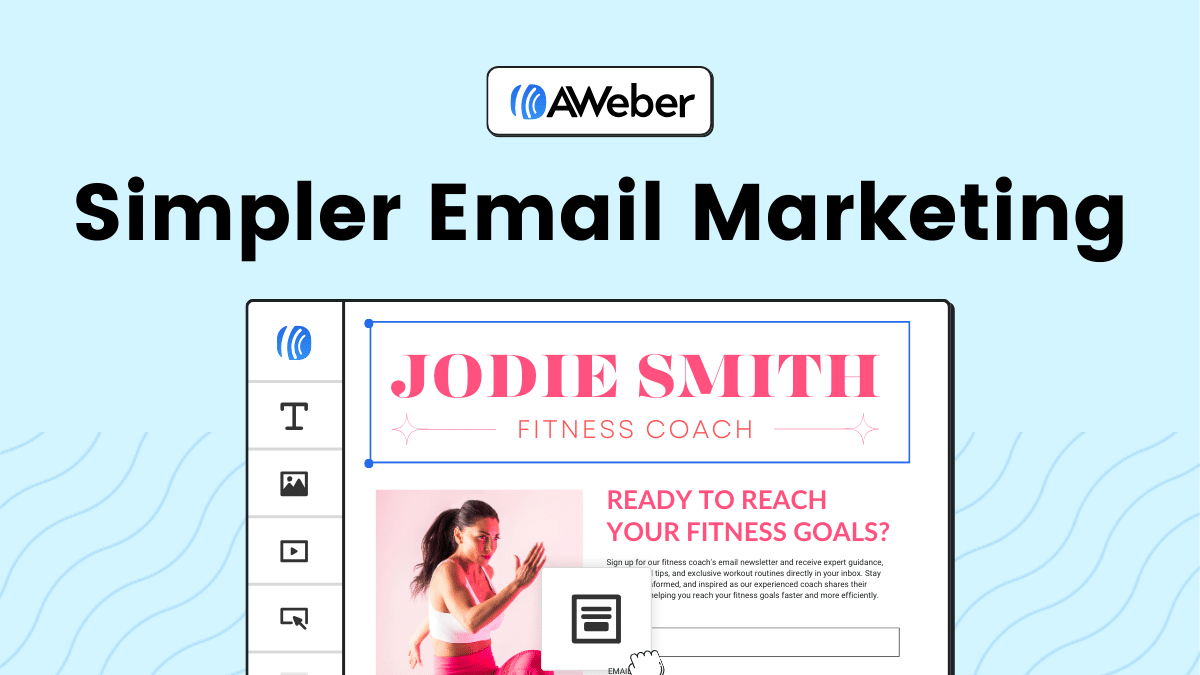 Aweber
| 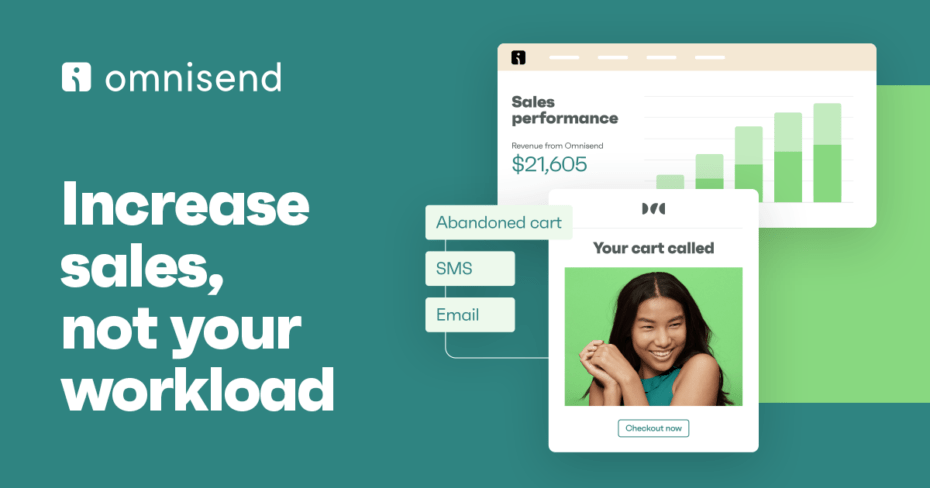 Omnisend
| 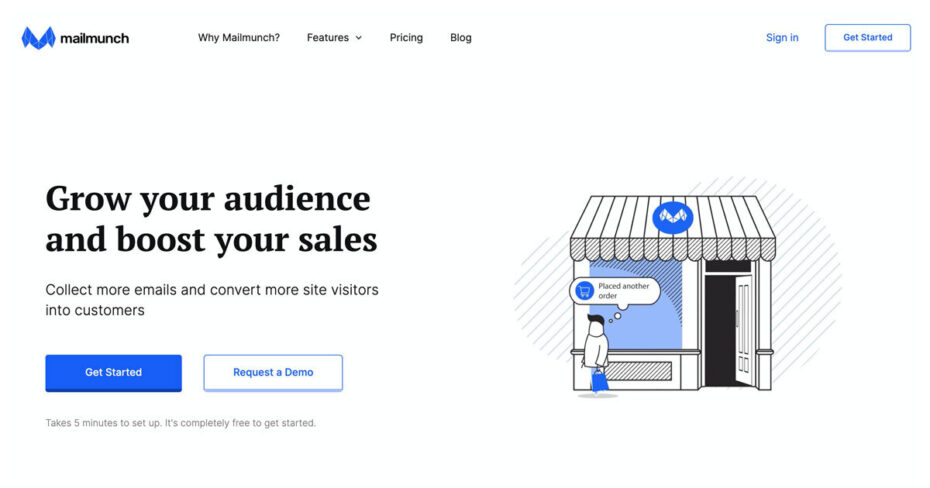 Mailmunch
|
Crafting Irresistible Email Campaigns That Capture Attention
How can you create email campaigns that stand out in a crowded inbox and encourage recipients to take action? Creating emails that capture attention starts with compelling subject lines.
I suggest using clear, concise language that conveys the value of opening the email. Including action words or personalization tokens, like the recipient’s name, can increase open rates. It’s essential to make a strong first impression, as this can determine whether your email is read or ignored.
The body of your email should deliver on the promise of your subject line. I recommend keeping your message focused and to the point, using visually appealing formats and including a clear call to action (CTA). From my perspective, emails that blend informative content with an attractive design tend to engage readers more effectively.
Visuals play a significant role in making your email campaigns irresistible. Incorporating relevant images or videos can enhance your message and make it more memorable. Additionally, ensuring your emails are optimized for mobile devices is crucial, as a significant portion of users accesses their email on the go.
Testing different elements of your email campaigns, such as subject lines, content, and CTAs, is a practice I strongly believe in. A/B testing allows you to understand what resonates best with your audience, enabling you to refine your strategy for better results continuously.
Analyzing Email Performance: Metrics That Matter
What metrics should you focus on to understand the effectiveness of your email marketing efforts and optimize future campaigns?
Open rates and click-through rates (CTR) are fundamental metrics that provide insights into how engaging your emails are. A high open rate indicates that your subject lines are compelling, while a high CTR suggests that your email content is relevant and persuasive. I consider these metrics a starting point for evaluating the success of your email campaigns.
Conversion rates offer a deeper understanding of how well your emails are driving recipients to take the desired action, whether that’s making a purchase, signing up for a webinar, or downloading a resource. From my perspective, this metric is critical for assessing the ROI of your email marketing efforts.
Bounce rates and unsubscribe rates are also important to monitor. A high bounce rate could indicate issues with your email list’s quality, while a high unsubscribe rate might suggest that your content is not meeting the expectations of your audience.
My recommendation is to use these metrics as feedback to continuously improve the relevance and quality of your email campaigns.
Engagement over time is another vital metric. Tracking how engagement changes with each email can help you identify patterns and optimize the timing and frequency of your communications.
4. Content Marketing: Build Trust, Generate Leads
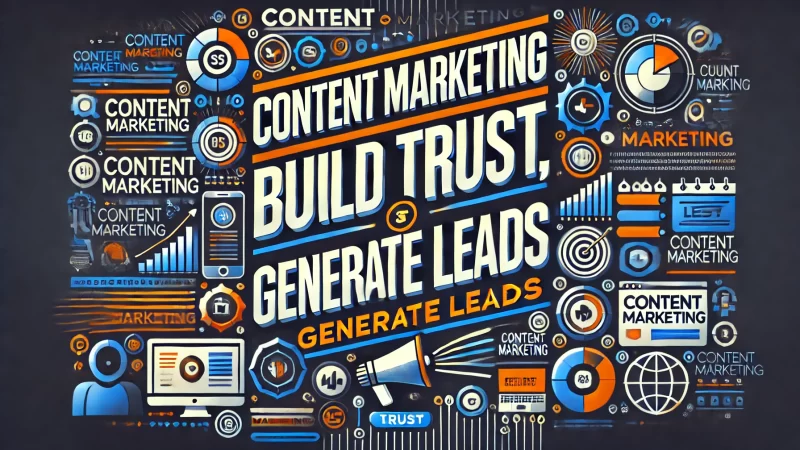
“Content is king, but engagement is queen, and the lady rules the house!” – Mari Smith. In the realm of digital marketing, this adage underscores the monumental role of content marketing in building trust and generating leads online.
Crafting valuable, relevant, and consistent content not only positions your brand as an authority in your industry but also nurtures relationships with your audience.
Most importantly, by addressing the needs and pain points of your potential customers, content marketing creates a foundation of trust, which is crucial for lead generation.
My suggestion for businesses looking to elevate their online presence is to prioritize content that educates, entertains, and engages their target audience, thereby fostering a loyal community around their brand.
Content marketing is not merely about producing content; it’s about creating meaningful connections with your audience. From my perspective, these connections are built on the understanding and insights you provide through your content.
Implementing a content strategy that is aligned with your audience’s interests and search intents can significantly enhance your visibility and attract more qualified leads.
I recommend using a mix of formats, such as blog posts, videos, infographics, and podcasts, to cater to different preferences and maximize engagement. A diversified content approach can lead to a broader reach and a stronger impact on your lead generation efforts.
Creating Content That Answers Your Audience’s Biggest Questions
“The best marketing doesn’t feel like marketing.” – Tom Fishburne. Understanding your audience’s biggest questions and pain points is pivotal in creating content that resonates. I suggest starting by conducting thorough research to identify the topics most relevant to your audience.
This could involve keyword research, social media listening, and feedback from customer service interactions. In my view, content that addresses specific questions not only attracts traffic but also positions your brand as a helpful resource, encouraging repeat visits and building trust over time.
Creating this type of content requires a deep understanding of your audience’s journey. From my perspective, each piece of content should be designed to move potential customers closer to a decision.
This means crafting content for different stages of the buyer’s journey, from awareness to consideration to decision. My recommendation is to focus on providing value at each stage, with clear calls to action that guide readers to the next step.
Interactive content, such as quizzes, surveys, and interactive infographics, can also play a significant role in engaging your audience. These formats encourage participation and can provide valuable insights into your audience’s preferences and needs.
Furthermore, creating evergreen content that remains relevant over time can ensure a steady stream of traffic and leads.
User-generated content (UGC) is another powerful way to answer your audience’s questions while building trust. Sharing stories, reviews, and testimonials from your customers can provide social proof and answer potential questions through real-life examples.
I strongly believe that incorporating UGC into your content strategy can enhance credibility and foster a sense of community around your brand.
Using Analytics to Tailor Your Content Strategy for Lead Generation
“Without data, you’re just another person with an opinion.” – W. Edwards Deming. In the digital marketing landscape, analytics play a crucial role in shaping effective content strategies.
I recommend leveraging analytics to gain insights into what content performs best, where your traffic comes from, and how users interact with your content. This data is invaluable for understanding the impact of your content marketing efforts on generating leads online.
Analyzing metrics such as page views, bounce rates, and conversion rates can help you identify which pieces of content are most effective at engaging your audience and driving leads. From my perspective, it’s important to look beyond surface-level metrics and delve into user behavior on your site.
Understanding the paths users take, the content that keeps them engaged, and the points where they drop off can provide clues on how to optimize your content for better results.
Segmenting your analytics data can further refine your content strategy. By examining the performance of different content types, topics, and formats across various audience segments, you can tailor your approach to meet the specific needs and preferences of your target market.
My suggestion is to use this segmented data to experiment with new content ideas and formats, always with the goal of improving engagement and conversion rates.
I believe that integrating feedback loops into your content strategy is essential. Encouraging comments, conducting surveys, and directly asking your audience for feedback can provide qualitative data to complement the insights gained from analytics.
This approach not only helps tailor your content strategy but also reinforces the trust and relationship with your audience, making your content marketing efforts more effective in generating leads online.
5. The Magic of Landing Pages in Capturing Leads
Just as a storefront is designed to entice customers to enter, a well-crafted landing page is the digital equivalent, compelling visitors to take action. It’s the critical juncture where a visitor’s interest can be transformed into a tangible lead, making the design and functionality of landing pages a pivotal element in generating leads online.
The magic of landing pages lies in their ability to focus a visitor’s attention on a single offer, message, or action, thereby increasing the likelihood of conversion. To leverage this effectively, it’s essential to understand the elements that contribute to a high-performing landing page.
Most importantly, clarity and conciseness in messaging, compelling call-to-actions (CTAs), and an intuitive design are non-negotiables.
From my experience, the integration of these elements, coupled with a deep understanding of your audience’s preferences and pain points, can significantly elevate your lead generation efforts. My recommendation is to prioritize the user experience, ensuring that every aspect of the landing page aligns with the expectations and needs of your visitors.
Creating a landing page that resonates with your audience requires more than just an attractive design. It demands a strategic approach to content, visuals, and layout. I believe that the key to capturing leads is to present a clear value proposition that articulates what visitors will gain by taking the desired action.
Additionally, the use of social proof, such as testimonials or client logos, can enhance trust and credibility, making visitors more inclined to convert. It’s also crucial to optimize the loading speed and responsiveness of your landing pages, as these technical aspects play a significant role in retaining visitors and facilitating a smooth conversion process.
Designing Landing Pages That Convert: Tips & Tricks
In the competitive digital landscape, your landing page needs to stand out and persuade visitors to take action. But what exactly makes a landing page effective?
Firstly, I suggest focusing on a strong, clear headline that captures the essence of your offer. This is often the first thing visitors will notice, so it should immediately convey the benefit of what you’re offering.
Alongside this, a persuasive subheadline can further elaborate on the offer, addressing any potential hesitations a visitor might have.
The use of high-quality images or videos that relate to your offer can significantly enhance engagement. Visual elements should complement the message, not distract from it.
From my perspective, incorporating visuals that depict the use or benefit of the offer can help visitors visualize themselves taking advantage of it, which is a powerful motivator for action.
A concise and compelling copy is crucial. Each word on your landing page should serve a purpose, driving towards the ultimate goal of conversion. My recommendation is to use bullet points or short paragraphs to communicate benefits clearly and succinctly, making the information easily digestible for visitors.
Finally, the CTA button is your conversion catalyst and should not be overlooked. The design, color, and text of the CTA button should stand out on the page and make it abundantly clear what action you want the visitor to take. I strongly believe that a well-crafted CTA can make the difference between a visitor bouncing and converting.
A/B Testing Your Way to Landing Page Perfection
The journey to optimizing your landing page for maximum conversion does not end with its launch. How can you ensure that your landing page continues to perform at its best?
A/B testing, or split testing, is an invaluable method for optimizing your landing pages. By comparing two versions of a page, you can empirically determine which elements contribute most effectively to your conversion goals.
I recommend starting with one variable at a time, such as the headline, CTA, or image, to accurately measure the impact of each change.
Analyzing the results of A/B tests can provide insights not just into what changes enhance performance, but also why certain elements resonate better with your audience. This understanding can inform broader marketing strategies beyond just landing page optimization.
From my view, ongoing testing and optimization is a critical process for any business serious about maximizing its online lead generation.
In my experience, successful A/B testing relies on having a clear hypothesis and sufficient traffic to reach statistical significance. This ensures that the decisions you make are based on data, not assumptions. My impression is that, over time, even small optimizations can lead to significant improvements in conversion rates.
Furthermore, embracing a culture of testing and continuous improvement can keep your landing pages and, by extension, your marketing efforts, aligned with evolving consumer behaviors and preferences.
I am of the view that businesses that commit to regularly refining their landing pages through A/B testing are better positioned to capture and convert leads in the dynamic digital environment.
6. Pay-Per-Click (PPC) Advertising: Fast-Track Your Lead Generation
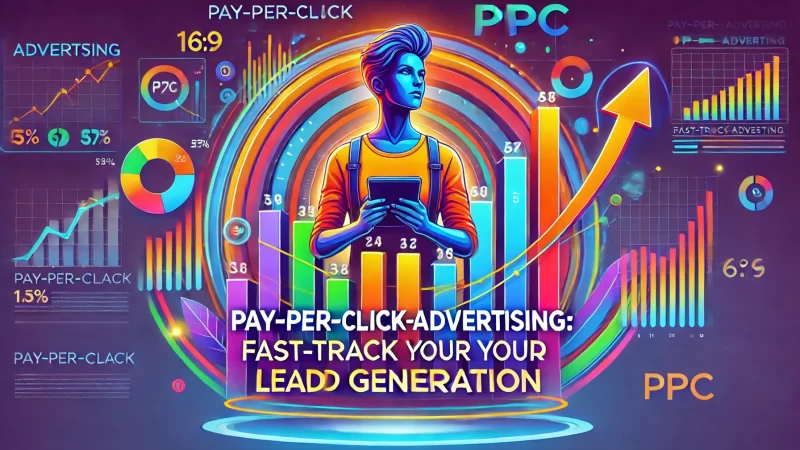
While it’s true that organic growth is invaluable, the immediacy and scalability of Pay-Per-Click (PPC) advertising make it an indispensable tool for fast-tracking lead generation efforts. When executed correctly, PPC can provide a significant boost to your online visibility, driving targeted traffic to your site more efficiently than organic methods alone.
PPC advertising, with its ability to place your brand at the forefront of your target audience’s search queries, acts as a direct pipeline to potential customers. It’s essential, from my point of view, to approach PPC with a strategy that emphasizes keyword relevance, ad quality, and landing page optimization.
Most importantly, by investing in PPC, you’re not just buying visibility; you’re also gaining insights into consumer behavior and preferences, which can inform your broader marketing strategy.
My recommendation for businesses looking to leverage PPC is to start with a clear understanding of their target audience and the objectives of their campaigns, ensuring every dollar spent is an investment towards generating high-quality leads.
Balancing your marketing mix with both PPC and organic strategies can create a synergistic effect, enhancing your overall online presence. In my experience, PPC offers a unique advantage in its ability to generate immediate results and provide measurable data on performance.
This makes it an excellent complement to long-term organic growth efforts, allowing businesses to cover all bases in their quest to generate leads online. Adopting a holistic approach that includes PPC can therefore accelerate your lead generation process, making it a critical component of a comprehensive digital marketing strategy.
Setting Up Successful PPC Campaigns: A Beginner’s Guide
Embarking on the PPC journey might seem daunting at first, but understanding the basics can set you on the path to success. Where should beginners start when looking to harness the power of PPC advertising?
Firstly, I suggest defining your goals clearly. Whether it’s increasing website traffic, generating leads, or driving sales, having a specific objective in mind will guide your PPC strategy and help measure its success. It’s also crucial to conduct thorough keyword research. Identifying the keywords your target audience uses when searching for products or services like yours is fundamental to creating effective ads.
Secondly, creating compelling ad copy is key. Your ads should not only be relevant to the keywords you’re bidding on but also enticing enough to persuade users to click through.
From my perspective, the best PPC ads address the user’s intent, offer value, and include a clear call to action (CTA). It’s important to remember that your ad copy is your first point of interaction with potential leads, making it a critical element of your campaign’s success.
When setting up your campaign, don’t overlook the importance of ad extensions. These can enhance your ad’s visibility and provide additional information or links to potential customers.
Additionally, setting up conversion tracking from the start is vital. This enables you to measure the effectiveness of your ads and understand how users are interacting with your website post-click.
Optimizing Your Ads for Maximum Impact and Conversion
Achieving success with PPC advertising isn’t just about setting up campaigns; it’s about continuously optimizing them for better results. How can advertisers ensure their ads are optimized for maximum impact and conversion?
Firstly, ongoing keyword optimization is crucial. This involves refining your keyword list based on performance data, adding new relevant keywords, and pausing those that aren’t delivering results. I strongly believe that maintaining a dynamic keyword strategy is essential for keeping your ads relevant and cost-effective.
Ad split testing, or A/B testing, is another powerful tool for optimization. By testing different versions of your ad copy, headlines, and CTAs, you can identify what resonates best with your audience. From my estimation, regular A/B testing is fundamental to improving your ad’s click-through and conversion rates over time.
Monitoring and adjusting bids based on performance data can also significantly enhance the effectiveness of your campaigns. This may involve increasing bids on high-performing keywords or lowering them for underperforming ones.
My recommendation is to utilize automated bidding strategies that can adjust bids in real-time based on the likelihood of conversion, thereby optimizing your budget allocation.
Finally, analyzing and acting on performance data is key to PPC success. This includes not just clicks and conversions but also metrics like quality score and ad position.
I am of the view that a deep dive into these metrics can provide insights into how to further refine your campaigns, ensuring your PPC advertising efforts are continuously optimized for generating high-quality leads.
7. Utilize the Power of Webinars to Engage and Convert
Surprisingly, webinars have been shown to convert attendees into leads at a rate higher than many other marketing strategies, with some industries witnessing conversion rates upwards of 40%.
This remarkable statistic highlights the untapped potential of webinars as a powerful tool for engaging with a targeted audience and driving significant lead generation and conversion.
Webinars offer a unique blend of value that few other online marketing strategies can match. They provide real-time interaction, personalized engagement, and the ability to deliver in-depth content that addresses specific audience needs and questions.
From my perspective, the key to leveraging webinars effectively lies in understanding their dual role: they serve both as an educational platform and a conversion tool.
By delivering high-quality, relevant content, you can build trust and authority with your audience, making them more likely to convert into leads or customers. Most importantly, I recommend viewing webinars as an opportunity to showcase your expertise and solutions, creating a direct pathway to generating leads online.
Furthermore, webinars offer the advantage of generating a wide range of content that can be repurposed across your marketing channels. From my experience, recording your webinars and using segments for future blog posts, social media content, or email newsletters can significantly extend the lifespan and reach of your webinar content.
This not only maximizes your investment but also ensures that the value you provide through webinars continues to engage and convert new leads long after the live event has ended.
Planning and Promoting Your Webinar for Maximum Attendance
It’s one thing to host a webinar; it’s another to ensure it’s well-attended. How do you plan and promote your webinar to ensure maximum attendance?
Firstly, choosing the right topic is crucial. It should not only be relevant and appealing to your target audience but also specific enough to promise valuable takeaways. I suggest conducting audience research or using insights from your customer service and sales teams to identify topics that resonate with your audience’s interests and pain points.
Secondly, timing and promotion are key factors in maximizing attendance. From my point of view, selecting a time that accommodates your target audience’s schedule can significantly impact attendance rates.
Promoting your webinar through multiple channels, including email, social media, and your website, is essential. I recommend a multi-touchpoint marketing strategy that builds anticipation and provides clear value propositions to potential attendees.
Creating compelling registration pages and leveraging early bird or exclusive content offers can also drive registrations. In my experience, these tactics create a sense of urgency and exclusivity, encouraging more sign-ups. Additionally, strategic partnerships or guest speakers can broaden your reach and add credibility to your webinar.
Email reminders and a strong social media presence in the days leading up to the event are crucial for keeping your webinar top of mind. I strongly believe that a well-crafted promotion strategy, combining urgency, value, and wide visibility, can significantly enhance your webinar’s attendance and, consequently, its success in generating leads.
Engaging Your Audience and Generating Leads Post-Webinar
Keeping your audience engaged during the webinar is critical, but what about after the event? How can you continue to engage attendees and convert them into leads?
Firstly, follow-up is key. Sending a thank you email to attendees with a link to the webinar recording, along with additional resources mentioned during the session, can keep the conversation going.
I recommend including a survey or feedback form to gather insights on the audience’s experience, which can inform future webinar topics and improvements.
Secondly, segmenting your attendees based on their interaction during the webinar can help tailor your follow-up efforts. For those who asked questions or participated actively, personalized follow-up messages can address their specific interests or concerns, making the engagement more meaningful. From my perspective, this tailored approach significantly increases the chances of conversion.
Leveraging the webinar content to nurture leads is also a strategic move. Repurposing the webinar into blog posts, infographics, or even a series of emails can provide ongoing value to both attendees and non-attendees. This continued engagement strategy, I believe, is crucial for moving leads through the sales funnel.
Finally, using the insights gained from the webinar and follow-up interactions to refine your targeting and messaging for future marketing efforts can enhance the effectiveness of your lead generation strategy.
My impression is that webinars are not just a standalone tactic but a rich source of data and engagement that, when fully utilized, can significantly boost your online lead generation and conversion efforts.
8. Implementing Referral Programs to Multiply Your Leads
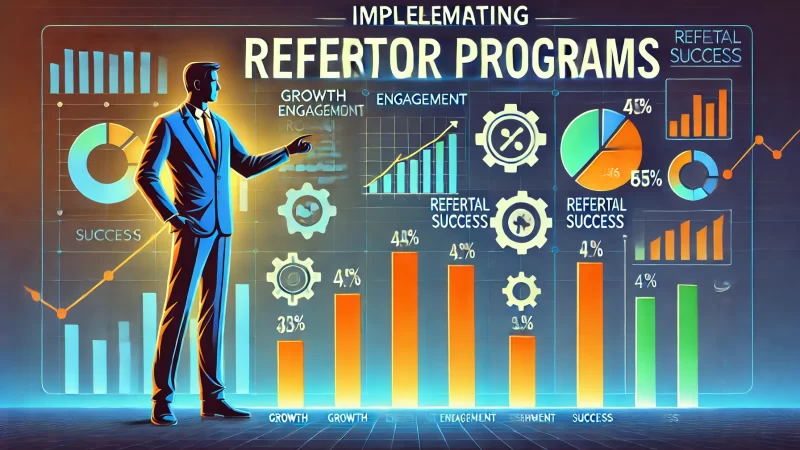
A study revealed that referred customers have a 37% higher customer retention rate and a 16% higher lifetime value than customers acquired through other means. This statistic underscores the power of referral programs as an essential strategy for not only generating leads online but also building a loyal customer base.
Referral programs harness the trust and relationships your existing customers have with their networks, turning them into advocates for your brand. This method of lead generation is especially potent because it leverages word-of-mouth, which is often considered the most trustworthy form of advertising.
From my perspective, the key to a successful referral program lies in creating a simple yet appealing process that motivates your current customers to refer others.
Most importantly, I recommend clearly communicating the value of your referral program to your customers, ensuring they understand how it works and the benefits of participating. This clarity can significantly enhance participation rates and, consequently, the number of leads generated.
Furthermore, referral programs can effectively complement your other online marketing efforts by creating a virtuous cycle of engagement and conversion. In my experience, customers who are referred to your brand are more likely to engage with your content, offers, and services because they were recommended by someone they trust.
Therefore, implementing a well-designed referral program can not only multiply your leads but also strengthen your brand’s reputation and customer relationships. My suggestion is to view referral programs not just as a tool for lead generation but as a strategic asset that can drive sustainable growth.
Designing a Referral Program That Works
What are the critical elements of a referral program that not only attracts but also converts participants into brand advocates?
Firstly, clarity and simplicity are paramount. The process for referring others and earning rewards should be straightforward and easy to understand. I suggest using clear, concise language in your program guidelines and ensuring the referral process is as seamless as possible.
This can involve integrating referral tracking into your website or using software that automates and manages the referral process.
Secondly, the value proposition of your referral program must be compelling. This means offering rewards that are genuinely appealing to your current customers and their referrals. From my perspective, a mix of rewards, such as discounts, exclusive access, or free products, can cater to different preferences and enhance the attractiveness of your program.
The visibility of your referral program is also crucial. It should be prominently featured on your website, in your email campaigns, and across your social media platforms. My recommendation is to create dedicated marketing campaigns that highlight the benefits of your referral program, encouraging more customers to participate.
Finally, personalization can significantly increase the effectiveness of your referral program. Personalized referral links, tailored email invitations, and messages that acknowledge and thank participants for their referrals can make the experience more engaging.
I strongly believe that personalizing the referral experience reinforces the feeling of being valued, encouraging ongoing participation and advocacy.
Encouraging Participation: Incentives That Drive Referrals
How can you motivate your customers to actively participate in your referral program and recommend your brand to others?
Firstly, selecting the right incentives is critical. These incentives should not only be valuable to your customers but also aligned with your brand’s offerings. I recommend offering tiered rewards to encourage multiple referrals, increasing the incentive value as customers refer more people.
This approach not only motivates initial participation but also encourages continued engagement with the referral program.
Secondly, celebrating and recognizing successful referrals can foster a positive, engaging atmosphere around your program. Sharing stories of successful referrals on your website or social media platforms, with permission, can illustrate the benefits of participation and inspire others.
From my view, recognition goes a long way in making customers feel appreciated and more likely to become repeat referrers.
Leveraging social proof is another powerful strategy. Featuring testimonials or case studies from customers who have benefited from the referral program can build trust and encourage others to participate. In my estimation, seeing real-life success stories can significantly influence the decision to engage with the program.
Lastly, regularly communicating with your customers about the referral program keeps it top of mind. This can include updates about new rewards, success stories, or tips for making effective referrals.
My impression is that consistent communication not only reinforces the value of the program but also reminds customers of the opportunity to participate, driving ongoing engagement and lead generation through referrals.
9. Networking Online: Build Relationships, Generate Leads
“Your network is your net worth.” – Porter Gale. This quotation perfectly encapsulates the essence of networking in the modern digital landscape. Online networking, when done right, can significantly expand your professional network and open up a plethora of opportunities for generating leads online.
It’s not just about increasing the number of connections; it’s about building meaningful relationships that can lead to mutually beneficial outcomes.
In my opinion, the art of networking online involves engaging with your community, sharing your expertise, and being genuinely interested in adding value to others. Most importantly, effective online networking can transform your digital presence into a powerful lead generation engine, by leveraging the trust and credibility you build within your network.
The digital era has provided us with various platforms and tools to network online, from LinkedIn and Twitter to industry-specific forums and groups. My suggestion for businesses looking to enhance their lead generation efforts through online networking is to focus on quality over quantity.
It’s essential to participate in conversations, contribute valuable insights, and connect with others in a way that fosters long-term relationships.
From my perspective, the key to successful online networking is consistency and authenticity. By consistently showing up, providing value, and engaging in meaningful interactions, you can establish yourself as a thought leader in your industry and attract leads naturally.
Mastering the Art of Online Networking in Professional Communities
How can you effectively navigate and contribute to professional communities to build your network and generate leads?
Firstly, identifying the right communities where your target audience or peers are active is crucial. I suggest spending time on platforms like LinkedIn, industry-specific forums, and professional groups related to your field. Joining these communities and observing the conversations can provide insights into the topics and questions that matter most to them.
Once you’ve identified the right communities, actively participating in discussions is key. Offering genuine insights, answering questions, and sharing relevant content can establish your expertise. From my view, the goal is not to sell but to build relationships and credibility.
This approach can naturally lead to opportunities for generating leads online as people begin to trust and value your contributions.
Creating and sharing original content that addresses the pain points and interests of your community can also enhance your visibility and establish your thought leadership. In my estimation, content that educates, inspires, or solves problems tends to receive the most engagement and can significantly boost your reputation within professional communities.
Engaging with other members’ content by commenting, sharing, or providing feedback is another effective way to build relationships. My recommendation is to approach these interactions with the aim of adding value, rather than focusing solely on what you can gain. This mindset can foster genuine connections and, over time, lead to lead generation opportunities.
Leveraging Online Events for Lead Generation Opportunities
In a world where digital connections are more important than ever, how can online events be used as a tool for lead generation?
Hosting or participating in online events such as webinars, virtual conferences, or panel discussions can significantly boost your visibility and position you as an authority in your field.
My suggestion is to choose topics that not only showcase your expertise but also address the needs and challenges of your target audience. This relevance can attract a more engaged audience, increasing the potential for lead generation.
Promoting these events through your network and on social media platforms can extend your reach and attract participants beyond your immediate circle. I strongly believe that collaboration with other professionals or brands for these events can also amplify your visibility and provide access to new audiences.
During the event, encouraging interaction through Q&A sessions, polls, and networking opportunities can enhance engagement and deepen connections with attendees. From my perspective, these interactions are invaluable for understanding your audience better and identifying potential leads.
Following up with attendees after the event with additional resources, a thank you note, or an invitation to connect can further solidify the relationships you’ve begun to build.
My impression is that a thoughtful follow-up strategy is essential for converting event engagement into tangible lead generation opportunities. By leveraging online events effectively, you can expand your professional network, establish your expertise, and open up new avenues for generating leads online.
10. Analytics and Feedback: The Key to Refining Your Strategy
In the world of digital marketing, data is akin to gold. Analytics offer a clear, quantifiable measure of your lead generation efforts, providing insights that can significantly enhance your strategy. Likewise, feedback acts as a compass, guiding your tactics towards more effective engagement and conversion.
Together, they form a powerful duo that can refine and elevate your lead generation strategy, ensuring that your efforts are not only effective but also aligned with your audience’s evolving needs.
Implementing analytics and actively seeking feedback allows you to understand the nuances of your target market’s behavior and preferences. Most importantly, this approach enables a cycle of continuous improvement.
By analyzing the data, you can identify what works and what doesn’t, making informed adjustments to your campaigns, content, and overall strategy. From my perspective, the key lies in leveraging these insights to optimize every aspect of your lead generation process.
My suggestion is to embrace analytics and feedback not as occasional check-ins but as integral, ongoing components of your marketing strategy.
Analytics provide the hard numbers that reveal the story behind your successes and challenges, while feedback gives voice to your audience’s experiences and expectations. Together, they offer a comprehensive view of your lead generation effectiveness, highlighting opportunities for optimization and innovation.
In my experience, businesses that regularly analyze their performance and actively seek out feedback are better positioned to stay ahead of the curve, adapting their strategies to meet the changing landscape of digital marketing and consumer behavior.
Using Data to Understand Your Lead Generation Success
How can data illuminate the path to lead generation success, and what metrics should you focus on to gauge your effectiveness?
To harness the full power of analytics in understanding your lead generation success, I recommend starting with metrics such as conversion rates, lead quality scores, and the cost per lead.
These indicators can tell you not just how many leads you’re generating, but also how effectively you’re converting traffic into valuable leads and at what cost.
Diving deeper, analyzing the sources of your leads can offer insights into which channels are most effective for your business. Whether it’s social media, email marketing, or your website, understanding where your best leads come from is crucial for allocating your resources more effectively.
From my view, this targeted approach allows for more refined and strategic marketing efforts.
Engagement metrics, such as time spent on your website and interaction rates with your content, can also provide valuable clues about the interest and quality of your leads. My suggestion is to use these metrics to identify which content resonates most with your audience, enabling you to produce more of what works and less of what doesn’t.
Lastly, tracking the journey of your leads through the sales funnel can reveal bottlenecks and opportunities for improvement. This involves looking at conversion paths, dropout rates, and the effectiveness of different touchpoints.
I believe that understanding these pathways is essential for optimizing the lead nurturing process and ultimately improving your conversion rates.
Gathering Feedback to Continuously Improve Your Tactics
While data provides the quantitative insights into your lead generation strategy, feedback brings the qualitative depth. But how can you effectively gather and utilize feedback to enhance your tactics?
Implementing structured feedback mechanisms, such as surveys, feedback forms, and direct outreach, can provide a direct line to understanding your audience’s perceptions and experiences.
I recommend making feedback collection an easy and accessible process for your audience, encouraging honest and constructive insights.
Social media platforms also offer an invaluable channel for informal feedback. Actively monitoring comments, messages, and mentions can provide spontaneous insights into your audience’s thoughts and feelings. From my perspective, this real-time feedback is crucial for making quick adjustments and addressing any concerns or questions.
Analyzing customer support interactions can also yield rich feedback. These conversations often contain direct input on what customers appreciate or where they encounter problems. My suggestion is to regularly review these interactions for patterns and insights that can inform adjustments to your lead generation efforts.
Finally, creating a culture that values and acts on feedback is essential. This means not only gathering and analyzing feedback but also implementing changes based on what you learn. I strongly believe that businesses that listen to and act on feedback are more adaptable, customer-centric, and ultimately more successful in their lead generation efforts.
By continuously refining your tactics based on direct input from your audience, you can ensure that your strategies remain effective and aligned with your target market’s needs.
Elevating Your Sales: Integrating the 10 Secrets into Your Strategy
Generating leads online is the cornerstone of modern business growth, but how can you transform these leads into skyrocketing sales? How do you integrate tried and tested secrets into your strategy for maximum effect? This concluding section explores how to elevate your sales by seamlessly incorporating the 10 secrets we’ve discussed into your overarching strategy.
Firstly, understanding the synergy between different strategies is crucial. SEO, for instance, lays the groundwork by increasing visibility, but it’s the engaging content that captures and holds the attention of potential leads.
I recommend starting with a robust SEO foundation and building upon it with high-quality content that addresses the needs and pain points of your audience. This approach not only attracts leads but also primes them for conversion by establishing your brand as a trustworthy authority.
Social media and email marketing further enhance this ecosystem by facilitating direct engagement and nurturing leads through personalized communication. Integrating these channels into your strategy allows for a more cohesive and interactive experience for potential customers.
Most importantly, I suggest using data from these interactions to refine your approach continuously. Analytics and feedback are invaluable in this process, providing insights that can guide your strategy and help optimize every touchpoint along the customer journey.
Webinars and referral programs represent powerful tools for deepening relationships and expanding your reach. I strongly believe in the power of leveraging these platforms to demonstrate expertise, provide value, and encourage word-of-mouth promotion.
By offering exclusive content or incentives through webinars and creating a rewarding referral program, you can foster a sense of community and loyalty around your brand, which is often the key to converting leads into sales.
Finally, PPC advertising and online networking present opportunities to fast-track lead generation and build strategic partnerships. While PPC offers a direct route to visibility, effective online networking can unlock doors to new markets and collaboration opportunities.
My recommendation is to view these tactics not as standalone strategies but as integral components of a comprehensive plan aimed at driving sales. By thoughtfully integrating these secrets into your strategy, you can create a cohesive, dynamic approach to generating leads online and converting them into sales, ensuring long-term business growth and success.
Frequently Asked Questions (FAQ)
What are the most effective ways to generate leads online?
The most effective ways to generate leads online include SEO optimization, content marketing, social media engagement, email marketing, PPC advertising, and landing pages. These methods focus on attracting potential customers through valuable content, targeted ads, and direct communication, ensuring a steady flow of qualified leads.
How can SEO help in generating online leads?
SEO helps generate online leads by improving your website’s visibility on search engines. By optimizing for relevant keywords, creating high-quality content, and ensuring a user-friendly site structure, you attract organic traffic from users actively searching for solutions you offer, increasing the chances of lead conversion.
What role does content marketing play in lead generation?
Content marketing plays a crucial role in lead generation by providing valuable, informative content that addresses the needs and pain points of your audience. This builds trust and authority, encouraging visitors to engage with your brand and eventually convert into leads.
How can social media be used to generate leads?
Social media can be used to generate leads by creating engaging content, running targeted ads, and interacting with your audience. Platforms like Facebook, Twitter, and LinkedIn offer advanced targeting options and tools that help you reach and attract potential leads effectively.
Why is email marketing effective for lead generation?
Email marketing is effective for lead generation because it allows for direct, personalized communication with potential customers. By sending targeted emails based on user behavior and preferences, you can nurture leads through the sales funnel, increasing the likelihood of conversion.
What are the benefits of using landing pages for lead generation?
Landing pages are beneficial for lead generation because they focus on a single call to action, making it easier to convert visitors. They are designed to capture leads through forms, offering something of value in exchange, such as an ebook or a free trial, thereby increasing conversion rates.
How can PPC advertising fast-track lead generation?
PPC advertising fast-tracks lead generation by placing your ads directly in front of users searching for your products or services. This targeted approach ensures immediate visibility and attracts high-quality leads ready to convert, making it a cost-effective method for quick lead generation.
What strategies can improve lead generation through webinars?
To improve lead generation through webinars, focus on promoting your event to a targeted audience, providing valuable and actionable content, and engaging participants with interactive elements. Follow up with attendees post-webinar to nurture leads and convert them into customers.
How do referral programs help in generating leads?
Referral programs help generate leads by leveraging your existing customers’ networks. Offering incentives for referrals encourages satisfied customers to recommend your business to others, leading to high-quality leads from trusted sources.


